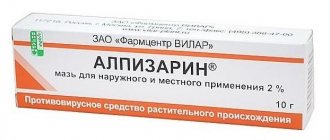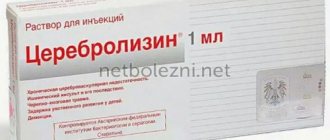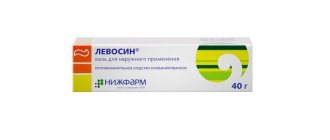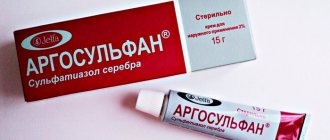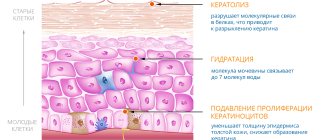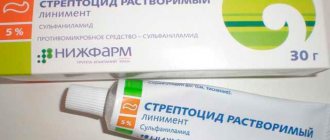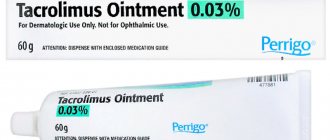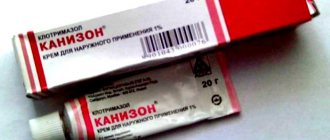Today almost everyone knows about the herpes virus; it is present in the body of 95% of the world's population and, in a normal state of immunity, does not manifest itself in any way for a long time. If the body's defenses are weakened due to hormonal imbalances, colds, under the influence of seasonal weather changes, in the presence of infectious diseases, the virus becomes more active and rashes appear on the lips, nose and chin, on the genitals and other places. Manifestations of herpes cause a person not only physical, but also aesthetic discomfort and require mandatory treatment. The trouble is that many people are carriers of the infection without even knowing it.
Antiviral drugs for external use, applied to the site of inflammation on the first day of activation of the virus, suppress the infection without allowing it to develop; used a little later, they speed up the healing process; they are popular among patients, since the external manifestations of herpes are not only unpleasant and painful, but can also significantly spoil the mood, creating aesthetic discomfort for a person.
One of the effective drugs that can get rid of a viral infection is Alpizarin ointment, a product that has many advantages. If herpes appears, you should avoid contact with loved ones and use individual utensils so as not to infect your loved ones. The “cold” is especially contagious in the first 3 days after its onset.
Alpizarin and a number of its substitutes
Alpizarin has a lot of analogues, and they are quite similar both in the method of preparation and in pharmacodynamics.
Here are just a few of them:
- Hyporamine;
- Kagocel;
- Mangogerpin;
- Ingavirin;
- Fuzeon;
- Viracept;
- Tiloron;
- Celsentry and others.
Hyporamine, like Alpizarin, is listed as a 100% herbal preparation. The active substance in Hyporamine is polyphenolic tannin complexes, which are contained in extracts of sea buckthorn leaves. Tannins, firstly, are inhibitors of viral neuraminidase, responsible for the interaction of viral virions with cells, and secondly, activators of universal antiviral proteins - interferons.
Kagocel also induces interferon protection, although the mechanism of its action has not been well studied or proven. It is important that this product also has a herbal composition. D.v. is a type of polymer called gossypol, a cotton polyphenol that is toxic in its free state. Almost all medicines in this series are obtained from plant materials.
Mangogerpin is a complete 100% analogue of Alpizarin, only produced in Vietnam (Alpizarin is produced in the Russian Federation by Vilar). Despite the active policy of promoting them to the masses and a number of positive reviews, many experts are cautious about taking Alpizarin and its substitutes.
Since most drugs have not been properly tested in accordance with WHO standards and Western standards, and there are many “blank spots” in pharmacodynamics and side effects (especially in the long term). However, the main doubt lies not in the potential danger of the drug, but in its effectiveness. That is why Alpizarin (ointment and tablets) is recommended in all instructions for use at the initial stage of the disease.
pharmachologic effect
The main effect of the drug is due to the suppression of the reproduction of viruses on the cellular structure. This is achieved by increasing the immune response at the cellular level and stimulating the production of the patient’s own interferon gamma.
The greatest effectiveness is shown against bacteria:
- Herpes simplex types 1-2;
- Herpes zoster is shingles;
- Varicella zoster – chicken pox.
The instructions for the composition confirm the success of suppressing the immunodeficiency virus, but in relation to cytomegalovirus, the ointment and tablets do not show the required effectiveness.
Types of medicine
Both Alpizarin ointment and Alpizarin tablets are packaged in standard white cardboard boxes with a red, orange or brown border at the bottom. On the border is written the nosological class of the drug - “antiviral”. Sometimes they additionally indicate “plant origin”.
The tablet form comes in 10, 20 or 30 pieces, which are placed in flat cell packaging made of PVC and aluminum foil. One tablet contains 100 mg of active substance.
The tablet also contains auxiliary components:
- Lactose;
- Calcium stearate;
- Potato starch.
The ointment is available either in soft aluminum tubes or in opaque glass containers weighing 10 or 20 grams. According to the content of the drug, ointments are divided into 2% and 5%. Among the auxiliary components, the ointment contains purified petroleum jelly. The medicine itself has a light yellow-green color (tablets) or a uniform light yellow color (ointment).
Alpizarin ointment
Active substance:
Tetrahydroxyglucopyranosilxanthen
Pharmgroup:
Antiviral (except HIV) drugs
Average price in pharmacies
| Name | Manufacturer | average price |
| Alpizarin 0.1 n20 tab | VILAR PHARMACY CENTER | 182.00 |
Analogs for the active substance:Alpizarin Alpizarin tablets 100 mg | Application area:Banal recurrent genital herpes Bednar afta Secondary genital herpes Genital herpes virus infection Genital herpetic infections Genital herpes Herpes genitals Herpes genital Herpes of the genital lips Skin herpes Herpes on the skin Genital herpes Herpes viral infections Herpetic infection Herpetic skin infection Herpetic infections Herpetic lesions Herpetic skin lesions Herpetic lesions of the mucous membranes of the genitourinary organs Herpetic gingivitis Herpetic gingivitis with extensive erosions Herpetic gingivitis with extensive ulcers Herpetic gingivostomatitis Herpetic dermatitis Herpetic stomatitis Herpetic stomatitis with extensive erosions Herpetic stomatitis with extensive ulcers Herpetic lesions of the genitals Herpetic skin lesions Herpetic lesions of the skin and mucous membranes Herpetic lesions of the skin and mucous membranes Oral ulceration Ulceration of the oral mucosa Ulceration of the oral mucosa Latent herpetic infection Neonatal herpes Acute herpetic skin disease Primary herpetic infection of the skin and mucous membranes Primary genital herpes Primary genital herpes Herpes simplex skin Herpes simplex of the skin and mucous membranes Herpes simplex affecting the skin and mucous membranes Herpes simplex extragenital and genital localization Recurrent herpetic infection Recurrent herpetic skin infection Recurrent aphthous stomatitis Recurrent genital herpes Recurrent genital herpes Aphthous stomatitis Chronic recurrent herpes virus infection Chronic recurrent herpes infection Eczema herpetiformis Kaposi Herpes simplex genitalis |
Active substance and nosological area of application
The drug Alpizarin has a therapeutic effect thanks to mangiferin (according to another nomenclature - tetrahydroxyglucopyranosylxanthene). According to the chemical classification, this substance belongs to xanthones - phenols, containing 2 molecules of benzene and 1 oxopyrone. Mangiferin is obtained from the leaves of the kopeweed (alpine or yellowing), or from the leaves/bark of the mango, or from the leaves of the East African shrub Afloya.
Pharmacological effects of mangiferin:
- antiviral;
- immunostimulating;
- bacteriostatic;
- cytostatic.
Only the antiviral effect is most pronounced, and against DNA viruses, and especially against varieties of herpes.
Hence the corresponding indications for use:
- herpes of the first and second types, anogenital herpes;
- herpes zoster (herpes zoster);
- lichen planus of various etiologies;
- chickenpox (chickenpox);
- cytomegalovirus (CMV);
- Kaposi's eczema;
- warts caused by HPV (human papillomavirus);
- genital warts caused by HPV;
- oral aphthae of viral etiology;
- pharyngotonsillitis;
- various forms of tuberculosis (only as an auxiliary therapy);
- diseases caused by certain types of gram-negative and gram-positive bacteria (Escherichia coli, various staphylococci).
The ointment is recommended for use if the viral infection manifests itself only locally (on the skin, mucous membranes). Or when epidermal rashes occur as a result of a bacterial infection.
Tablets are recommended for more acute cases, when non-specific symptoms are observed at the level of the whole organism (fever, weakness, malaise, headaches, dizziness).
For combined symptoms (skin rashes, fever, nausea, etc.), Alpizarin is used in both forms.
Properties
The product has bacteriostatic, antibacterial, immunomodulating and antiviral properties. Alpizarin ointment can suppress the development of herpes. The drug is especially effective at the early stage of infection. In addition to being antiviral, the drug has a bacteriostatic effect; it prevents the development of staphylococcus, tuberculosis, E. coli and parasitic protozoan microorganisms.
In addition, the drug is able to stimulate local immunity.
Dosage and methods of application
The amount of the drug used is important mainly when taking tablets, since the ointment has only a local effect.
The dose and duration of therapy is determined by several factors:
- type of disease;
- severity of the course;
- patient's age;
- prevention or treatment.
The tablets are taken orally by swallowing without chewing with a sufficient amount of water. Taking this medicine has nothing to do with eating.
The standard dosage gradation by age group is as follows:
- adults and children over 12 years old – 1-2 tablets 2 to 4 times a day;
- children under 12 years old – 1 tablet no more than 3 times a day;
- children under 7 years old - no more than 2 tablets per day (the tablet can be divided in half).
The maximum permissible daily dose for adults and children over 12 years of age is 8 tablets (800 mg), for children under 12 years of age - 3 tablets (300 mg). The duration of treatment depends on what disease the patient suffers from.
The minimum course is 5 days, and the maximum is 3 weeks:
- various herpes eczemas, herpes of the first two types – 5-15 days;
- chicken pox, lichen – 5-21 days;
- CMV – 7-21 days;
- antibacterial therapy – 7-21 days;
- warts, condylomas, tonsillitis – 5-15 days;
- preventive course (carried out a month after the main therapy) – 7-14 days.
Same with ointment. Alpizarin ointment must be applied directly to the affected areas. The layer should be thin, light rubbing is acceptable. You can use the ointment up to 5 times a day. It is important that 5% ointment is intended only for the skin of adults and children over 12 years of age. For children under 12 years of age, 2% ointment is recommended. Also, a two percent ointment is used if a viral infection manifests itself on the mucous membrane.
Pharmacodynamics and mechanism of drug action
Pharmacodynamics are again of greater importance for tablets, since here the substance enters the body through the gastrointestinal tract. After swallowing, mangiferin is very quickly absorbed through the stomach wall. Once in the blood, the substance begins to actively bind to its proteins.
Until about 90% of mangiferin is bound. Its maximum concentration in blood plasma is observed during the first hour after taking the drug. Approximately 0.1% of the substance is excreted from the body along with urine. After 12 hours, the drug is completely eliminated from the body.
Mangiferin enhances the production of immune glycoprotein, interferon gamma, in the body.
This type of interferon is responsible for:
- Activation of macrophages, which, as they move in the bloodstream, randomly capture pathogenic, foreign elements - mainly pathogenic bacteria, but viral particles can also be absorbed and broken down.
- Activation of neutrophils - microphages that actively absorb pathogenic bacteria and, to a lesser extent, viral virions.
- Activation of T-killers is the main “defensive line” of antiviral immunity, because this subtype of lymphocyte destroys virus-infected cells.
- Strengthening antigenic presentation (in simple terms, the immune system more carefully “studies” foreign DNA in order to destroy its carriers as quickly and efficiently as possible).
- Decreased production of immunoglobulin E.
Mangiferin also inhibits the nuclease of pathogenic bacteria, which makes it difficult for them to reproduce further.
Finally, this substance has a number of physiological effects:
- cardiotonic (increases the force of myocardial contraction);
- hydrocholeretic (increase in the volume of bile due to its dilution with an influx of water and, as a result, a choleretic effect);
- antihyperkalemic (reduction of elevated potassium concentrations in blood plasma);
- psychotropic (in the form of a moderate stimulating effect on the central nervous system, like caffeine).
But the physiological effects of Alpizarin have been poorly studied, and there is no guarantee that at least one of them will definitely manifest itself somehow. There is a purely individual factor at work here.
Compound
The drug contains natural ingredients:
- alpine and yellowing pennyweed;
- mango leaves.
Excipients:
- potato starch;
- lactose;
- calcium stearate.
Thanks to natural components, mangiferin is obtained - a substance that is an extract from medicinal herbs. The main effect of mangiferon is to suppress the development of pathogenic virus cells and prevent their reproduction in the initial stages of development. In addition, this substance also has an inhibitory effect on other more dangerous bacteria, for example:
- tuberculous mycobacteria;
- staphylococcus;
- coli;
- bacterial nuclease;
- some parasitic protozoa.
Alpizarin has an immunomodulatory effect, stimulating cellular and humoral immunity, promoting the production of interferon gamma by blood cells. The results of clinical studies have proven that the medicine in any form is non-toxic and safe in the treatment of viral diseases.
Contraindications
Alpizarin has no serious contraindications. Unless the age is up to three years and individual allergic reactions, including lactose intolerance (included in the composition as an auxiliary component).
With caution, as with other drugs, Alpizarin is prescribed to pregnant and lactating women.
Side effects are minimal and occur extremely rarely.
For example:
- hives;
- skin itching;
- headache;
- malaise;
- nausea.
However, there is no complete information about the strong “side effects” of Alpizarin. Itchy skin can be relieved using regular skin cream or gel.
